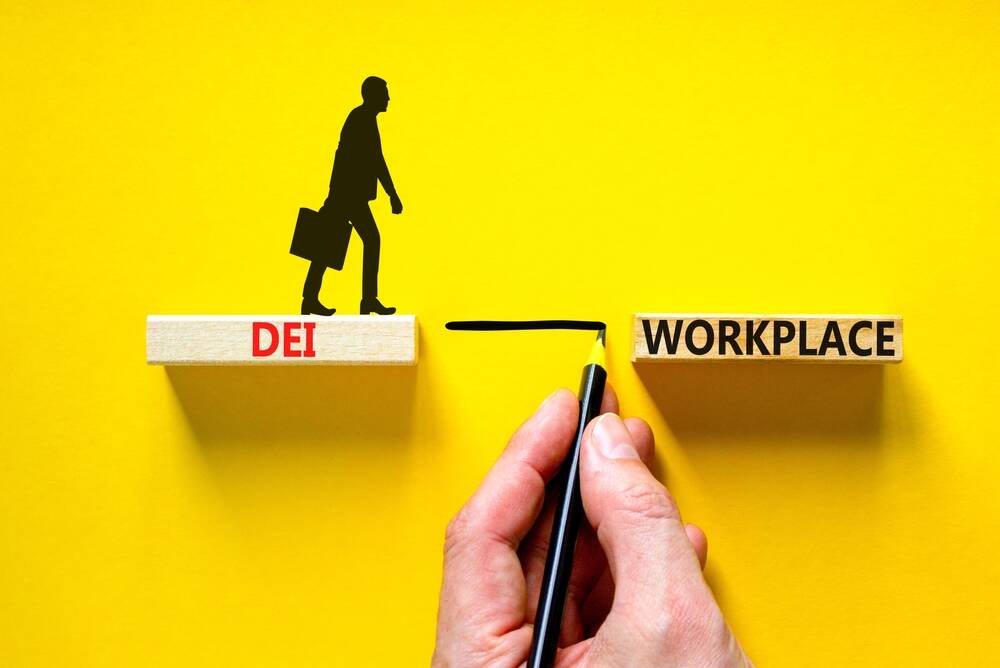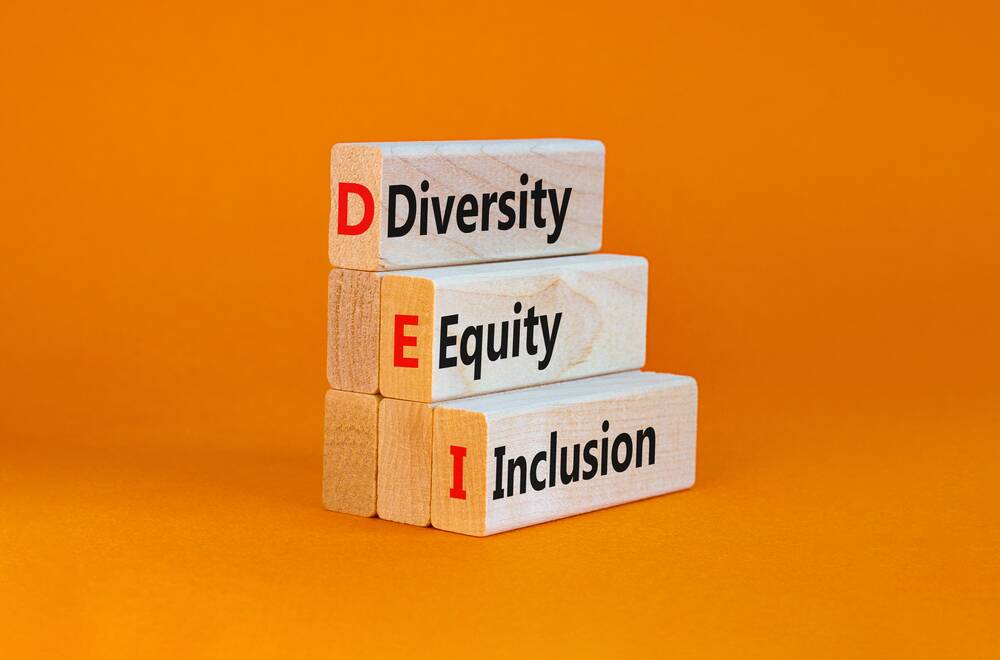Tips for making DEI a reality in every Australian workplace

This is branded content for Ezitag.
By Michelle Buljan
Much can be said of International Women's Day (IWD).
Held on the March 8 each year, IWD is an annual event that encourages participants to celebrate the achievements of women and also highlight the issues that they face.
While it may be well-intentioned, in recent years, IWD has come under fire for being inadequate to deal with the problems that women face in the workforce every day.
In fact, for 365 each year, women and minorities face all sorts of challenges in the workforce that limit their opportunities to take on leadership roles.
How can we look beyond name tags in Australia, and strive to promote workforces that demonstrate diversity, equity, and inclusion (DEI) at all levels of a business?
Perhaps it is time to consider the many ways that diversity can benefit a workforce and the strategies that can be undertaken all without raising a teacup.
Moving beyond tokenism
Aspiring to become a diverse and equitable workforce is a noble goal, and it's important to recognise the current state of workplaces around Australia to consider the overall diversity of workforces.
Unfortunately, tokenistic attempts from employers trying to look good impeded on genuine attempts to make progress.
In 2023, the Australian Institute of Company Directors published a report that investigated proportion of females in boardrooms around Australia.
The findings were quite stark.
Consider this - in a world where 35 per cent of ASX300 boardrooms are at least 30 per cent female, how is it that only 11.3 per cent of those same 300 listed companies have a female CEO?
In part, perhaps it's down to the standards that corporate Australia set, long before the pursuit of diversity in the workforce.
In part, the leadership pipeline, focusing on the successes of men, overlooks the benefits that women bring to the workforce.
In the words of Nicole Wakefield Evans, Chair of the 30% Club, an organisation striving to achieve better representation on corporate boards: This shocking lack of progress points to the entrenched, systemic drivers of gender inequality that exists in Australia's workplaces, including a persistent gender pay gap and the dominance of men in leadership pipeline.
In a world where inequality is entrenched, how can we begin to improve standards, to encourage and foster the development of more diverse organisations?
Perhaps we need to look more broadly at the issue and consider how to improve diversity throughout all areas of an employee's time with a company.

Recruiting for all - Equal opportunity in hiring
Have you ever looked at a job advertisement and excluded yourself based on a description?
I know I have - and in fact, it's not particularly unusual for people to exclude themselves based on a description.
For women, however, the rate of self-exclusion is far higher - where 22 per cent of men apply for qualified roles that they believe they have the skills for, only 6 per cent of women apply.
This can be attributed to the ways that biases can be perceived within job descriptions - with phrasing and descriptors portraying a certain type of employee - and it may even be unintentional.
Vague descriptions, in particular, can be quite dissuading to female job applicants - for someone who may have spent time away from the workforce due to starting a family, having flexibility may be just as important as a well-paying role.
One way to tackle diversity in the workforce is to review and consider the way that roles are presented to the outside world.
Hiring teams, crucially, should ask themselves these key questions:
- Are candidates able to identify what skills are necessary to succeed in the role?
- Are candidates well-informed about policies that encourage workplace flexibility, such as part-time working arrangements?
- Have job descriptions gone through a peer review process, as well as checks for bias, both conscious and unconscious?
These steps may seem small however, they can have a substantial impact on the proportion of women and other diverse cohorts that apply for a position.
Job descriptions that encourage diverse applicants can help to maximise candidate applications for all the right reasons.
Tackling the challenges of inequality
Confronting bias and inequality can be a challenge.
However, the answers to equal opportunity don't just sit with the hiring team.
It's up to every organisation to develop and implement policies and standards within their workplaces that remove barriers and encourage diversity.
Company policy and the ways that diversity and inclusion are tackled in the workplace are crucial to the ongoing success of DEI initiatives in any workforce.
The Workplace Gender Equality Agency, a government body working towards improving equality within the workforce, notes four key areas of focus: equal pay for equal work, removal of participation barriers, improving access to leadership, and the elimination of gender, family, and caring-based discrimination.
By working towards tackling these areas of concern, opportunities for diversity and inclusion will naturally evolve.
Normalising the conversation about parenthood, for example, may help fathers feel more comfortable in asking for flexible working arrangements to work around childcare and other family requirements.
Employers, auditing pay gaps, may take steps to remedy that change during pay cycle discussion. This has often been to great success in the workplace, with research finding that such audits can go a way towards addressing pay inequality within the workforce.
With DEI, enterprises thrive
Ultimately, in a world where communities are increasingly diverse, we should strive to have workforces that represent the communities they work in.
Consider, for example, the accusations of discrimination and racism that police officers face in the United States - if the police force was more representative of the community, could police violence be averted?
Diversity, equity, and inclusion initiatives allow businesses to thrive, by not only setting an environment that encourages equality - but by also tackling the challenges that inherently exist in traditional corporate roles.
I'm hopeful that within my lifetime, we'll achieve true equality in the workforce.
Perhaps one day, we may even have a Prime Minister who is from a diverse background - as we strive towards making corporate Australia more diverse, perhaps we should also consider what's next.
- Views expressed are not that of the publisher.


